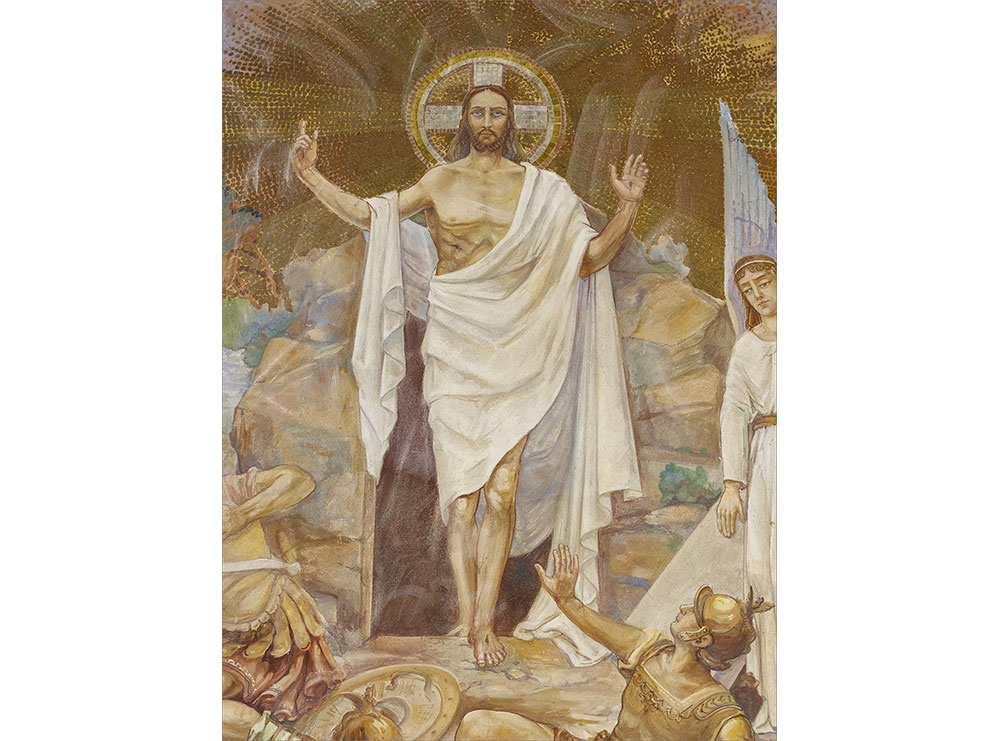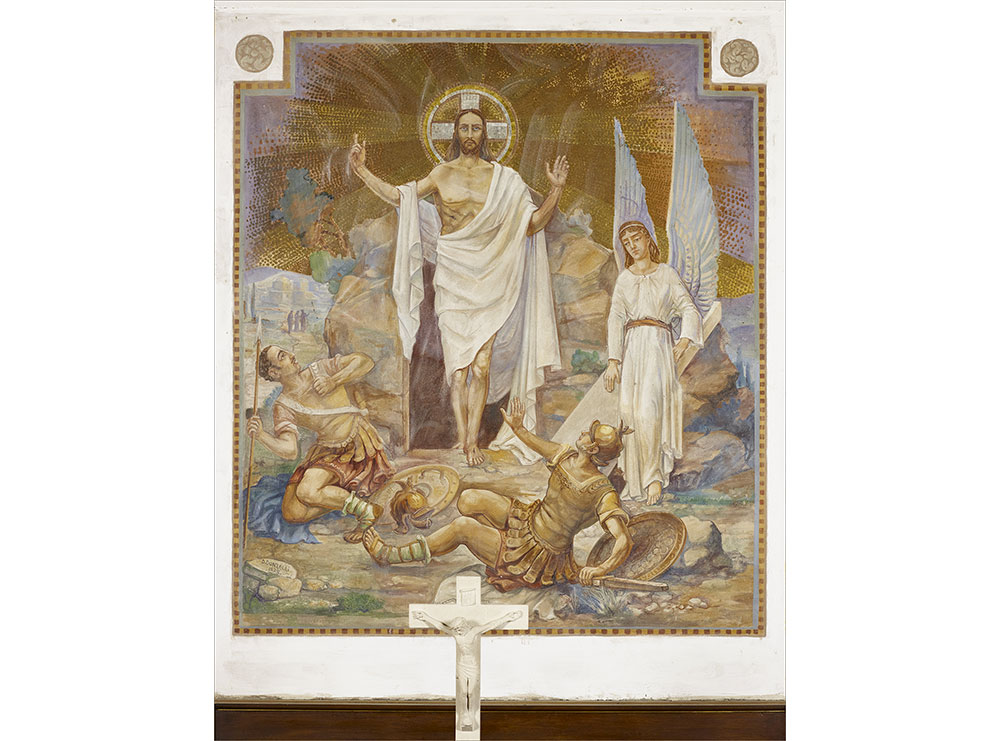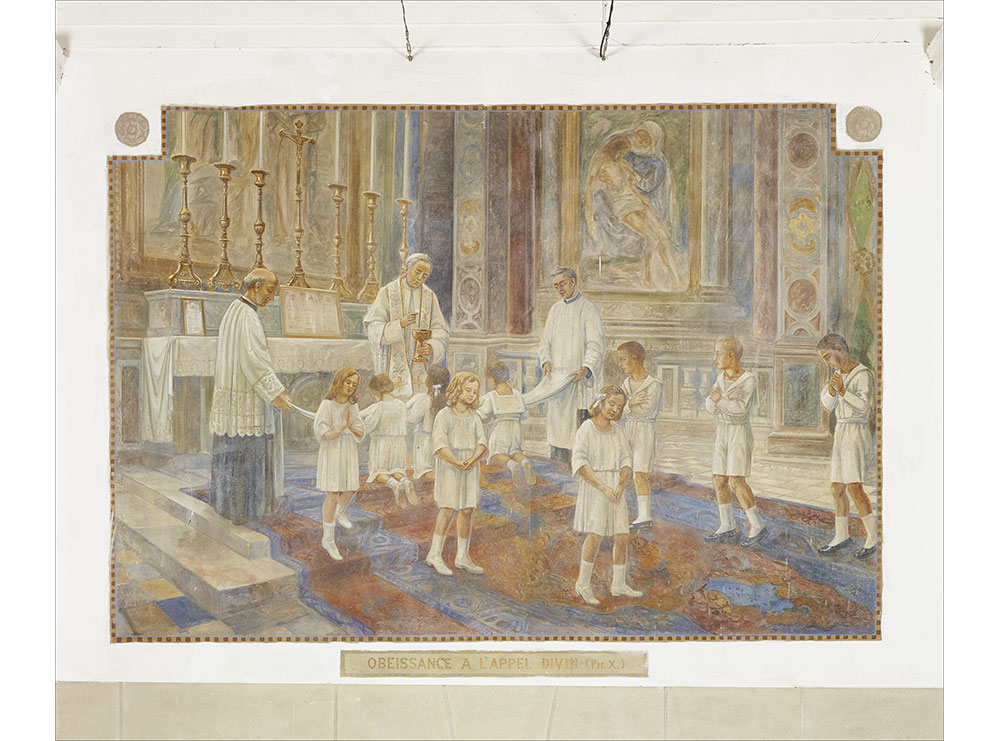Lérouville, Church of St Walpurga
Dedicated to a saint of Saxon origin who became an abbess in Germania, the Church of St Walpurga was built in 1826. It was supposed to replace the primitive church that was erected on the hill on the other side of the road, behind a thick rampart whose base was preserved. This first building, which had been in poor condition since the 18th century, was eventually destroyed in 1829. Having survived the destruction of the Great War virtually unscathed, the church underwent restoration works in 1938. The priest, Bardin, had the rear panel behind the high altar replaced and hired Duilio Donzelli for the job.
The mural paintings are limited to three locations and do not fully cover the walls, as in most cases. At the back of the apse, one’s attention is immediately drawn by a resurrected Christ leaving the tomb. Having defeated death, he is shown dressed in a white robe, with his right hand in a sign of benediction. An angel goes with him. Two soldiers thrown to the ground by the shock of his appearance assume a position that expresses terror. For this scene, Donzelli borrows from the tradition of the painters of the Italian Renaissance who often depicted this theme: having been deeply affected by the war and the scars that it left, he dispenses with the cross or banner held by Christ in the paintings of Piero della Francesca, Bellini or Raphael and replaces it with the open hand showing stigmata, signs of the pain and suffering experienced by his contemporaries.
The painting on the left, “Suffer the little children to come unto me”, illustrates a passage from the Gospels in which Jesus welcomes children: Jesus, who can be identified by his cruciform halo, blesses the children surrounding him. In the background, architectural features and the mountainous landscape evoke the Palestine of Jesus’s time. The child-based theme continues on the final piece of decoration, “Obedience to the divine command (Pius X)”; it contains a scene showing first communion with these children dressed in white who are kneeling to receive the host from the priest before going away in contemplative mood. It was Pope Pius X who introduced communion for young children through the Quam singularis decree of 1910.
These three depictions are entirely consistent with their interwar context: the theme of the Resurrection is favoured to inspire hope among families in mourning and emphasis is laid on childhood, which was essential to the rebuilding of the country.
Halo: circle or disc of light surrounding the head of holy figures, deified heroes, God or saints.
Quam singularis: this decree, which was passed in December 1910 in the Vatican by the sacred Congregation for the Sacraments, advised that communion should first be given to children at the age of seven.





